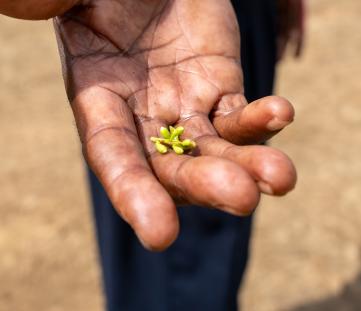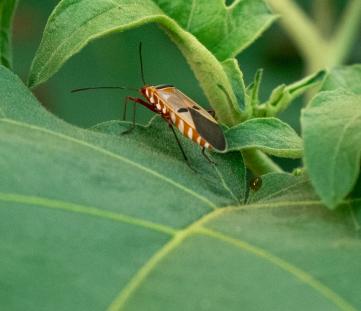ID: ZMM-KP7N
ID: ZMM-KP7N
Graviola
Annona muricata
Photo
Colombia
12:59 - 24°C
My connections
My ID card
Who am I?
Date of birth
07/06/2023
Name
Graviola
Tree
Graviola
Where am I located?
Country
Colombia
Place of birth
Ciénaga
Coordinates
11° 2′ 41.92″ N
74° 6′ 47.95″ W
/-74.11331849,11.04497844,0/500x333@2x?access_token=pk.eyJ1IjoidG9tbWFzb3NwZXJvbmkiLCJhIjoiY2tnOTE3eW12MDJqazMybXNzOWV1YjloOSJ9.wtGsuDU7XIKjcv2cq8CiXw&logo=false&attribution=false)
My Timeline
The important moments in your tree's life.
Seed
It all starts with a tiny seed, nice and warm in the soil.
Nursery
Your seedling is big enough to be welcomed into one of our nurseries, along with many others.
Planted
We’re here! Your tree has reached its new home: it’s been planted by a smallholder, who’ll take care of it for years to come.
Photo
Strike a pose! Now that it’s big enough, here’s a photo of your tree!
My Gallery
Nursery

Planted
/-74.11331849,11.04497844,0/500x333@2x?access_token=pk.eyJ1IjoidG9tbWFzb3NwZXJvbmkiLCJhIjoiY2tnOTE3eW12MDJqazMybXNzOWV1YjloOSJ9.wtGsuDU7XIKjcv2cq8CiXw&logo=false&attribution=false)
74° 6′ 47.95″ W
Photo

Curiosity about me
The important moments in your tree's life.
Let's start with introductions
Its scientific name is Annona Muricata, but its most common names, besides Graviola, are Guanabana, Corasol and Corossole. It’s a tropical tree which today is found from Australia to America, via Asia and Africa. It shuns low temperatures and can grow up to 10-12 metres in height, developing a not particularly voluminous crown. It is prized for its fruit, also called Graviola (or soursop), which despite being covered with spikes is very sweet and juicy.
Meaning
Delicacy
When it’s perfectly ripe, the pulp of the fruit from this tree has a flavour that balances acidity and sweetness, filling the palate but leaving the mouth ready for the next bite! A real delicacy!

How much CO2 I’ll absorb
My estimated CO2 absorption capacity is based on the first 10 years of my life*
Current absorption
- 20 kg
2023
0 kg
2033
-200 kg
* The tree will continue to absorb CO2 even after the tenth year. Therefore this is a prudent estimate.
How I am useful to local communities

Medicine
Its leaves, roots, bark and/or fruits are used in traditional medicine.

Consumption and sales
Its fruits, seeds and/or leaves are used as food in the farmers' families or are sold on local markets.

Natural pesticide
Its leaves and/or its fruits contain useful substances that can be used against plant diseases or as natural pesticides.
My benefits
80%
Food Security
The trees will bear fruits, some that will be edible immediately and others that can become edible through processing, ensuring food resources over time.
60%
Economic development
The trees' fruits and the products derived from their transformation can be traded in local networks, offering income opportunities.
60%
CO₂ Absorption
During its life cycle, each tree will absorb CO₂. The trees you plant can offset your emissions.
60%
Environmental protection
The trees are planted in agroforestry systems that favor the virtuous interaction between the different species and their positive impact on the environment and on the land.